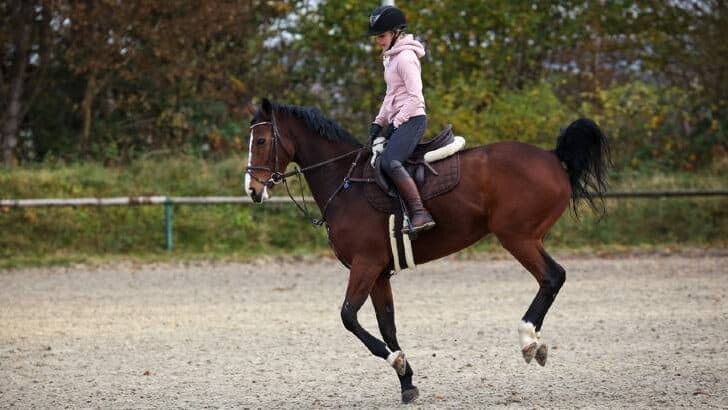Affiliate Disclaimer
As an Amazon Associate I earn from qualifying purchases. It helps me keep the website going. Thank you for your support.
Horseback riding is something that people of all skill levels can enjoy. However, some horse breeds are better suited to those with more experience. So, what are the worst horse breeds for beginners?
The worst horse breeds for beginner riders include Arabian Horses, Thoroughbreds, Mustangs, Akhal Teke Horses, Shire Horses, Percheron Horses, Trakehner Horses, Friesian Horses, and Australian Brumbies.
One of the most important things for beginning equestrians to learn is to be confident in themselves and master the basics. So, read on to find out more about the breeds least suited to those just starting with horses.
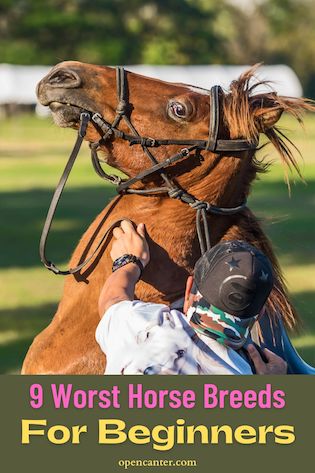
What Are the Worst Horse Breeds for Beginners?
No horse breed is inherently bad, each one is unique and has qualities that make them great. However, some horses are a better match for people with more riding experience. This could be due to their temperament or something else. In this section, let’s explore some horse breeds and explain why they are a poor choice for beginners.
1) Arabian Horses
Arabians are considered a poor choice for new equestrians because they are hot-blooded horses with a lot of energy. They may be too much for beginners to handle and cause them frustration.
Arabians also prefer a rider who is clear with instructions and does not hesitate. Beginner riders will often be unclear and or inconsistent with the aides until they gain confidence. Riders that are not familiar with the breed may be intimidated by their nature as well
Arabians that are mares or stallions have more energy than geldings, so beginners should avoid them.

2) Thoroughbred Horses
Thoroughbreds are athletic and muscular horses bred for careers on the racetrack. As such, they are often too much horse for new riders to take on. They can be extremely spooky and have a lot of energy, so they need a confident and experienced rider.
Often, thoroughbreds that do not find success on the track are retrained for other disciplines They are often brought on to lesson programs after extensive training with professionals, and only then is it possible for them to be ridden by novices and beginners.
Thoroughbreds can also be anxious horses because they have so much energy. Their anxiety will make them jumpy. This will make it harder for beginners to handle them. You can read more about thoroughbred horses here.
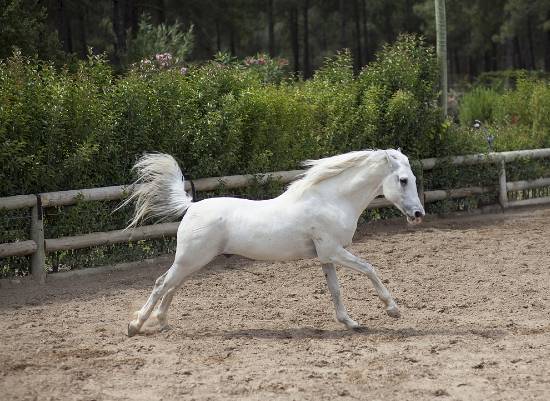
3) Mustang Horses
Mustangs are wild or feral horses that have little to no experience with humans. As a result, they do not make a good mount for someone with no understanding of horses. To handle a mustang, you need to know horse behavior and herd mentality.
Mustangs are rehabilitated by trainers for careers as performers and riding horses. This process can take months to years depending on the horse. It involves desensitizing them to stimuli, teaching them how to lead, getting them used to a rider, and more.
If a beginner were to attempt working with an untrained mustang, they risk injury. Mustangs still have all of their survival instincts, and it takes them a while to know humans are not a threat.

4) Akhal Teke Horses
Much like the Arabian and Thoroughbred, the Akhal Teke is not ideal for new riders because the breed is high-spirited. They are also very smart, meaning that they can use their knowledge of humans to outsmart beginners and make it hard for them to learn. These horses are bred to move quickly, and going fast can scare someone starting out.
Akhal Tekes are also sensitive horses, meaning they can feel the movements of the rider more easily. So, if a beginner is on them and they make a mistake with the aides, the horse may respond harshly or not at all.
This will frustrate the beginner and shake their confidence. New riders must have positive learning experiences to propel them forward.
Akhal Tekes can get attached to one rider, making it difficult for those that are learning to work with them.
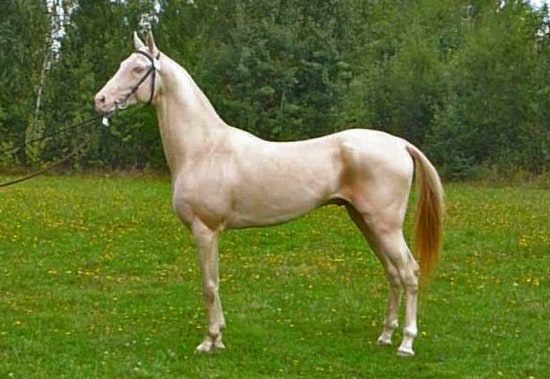
5) Shire Horses
Shire Horses are tall and heavily built draft horses designed to pull large loads. Due to their size alone, they are difficult for beginners to handle. Some may even be afraid to lead or mount them because they are so much taller than the average horse.
Their strength can also be hard for new riders to handle under saddle. If a shire goes into a faster gait without a cue from the beginner, they will likely have difficulty getting them to slow down or stop.
This could lead to an accident that is unsafe for the horse and the new rider. If a Shire spooks, the reaction is also bigger because of its size. Beginners need to learn about large horse breeds before handling them.
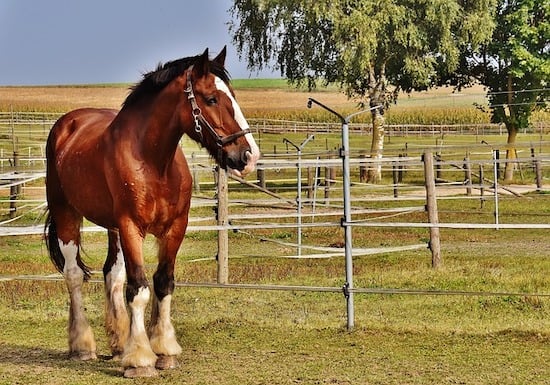
6) Percheron Horses
In the same way as the Shire, Percherons are not the best fit for beginners because of their size and strength. Beginners will likely need help handling and riding larger breeds of horse like this.
However, Percherons are gentle giants with a kind nature and will teach riders what they need to know once they gain more experience.
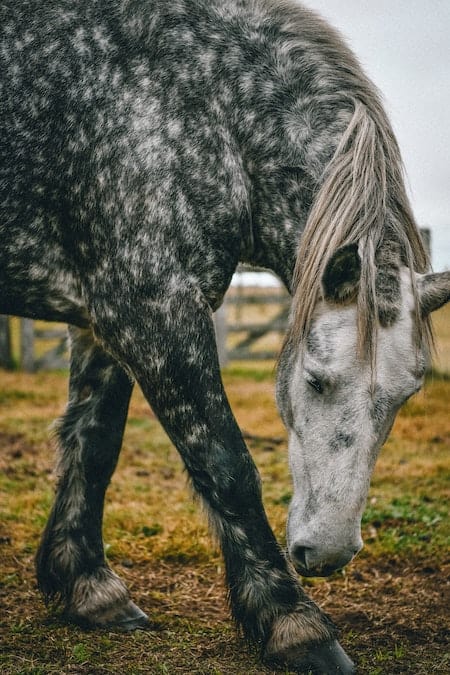
7) Trakehner Horses
Trakehners are warmblood horses built to excel in sport. As such, they are powerful horses with big, high-stepping movements. Riders who do not have horse experience will likely not have the body strength to handle them. Their intelligence and strong-willed temperament make them a better choice for experienced riders.
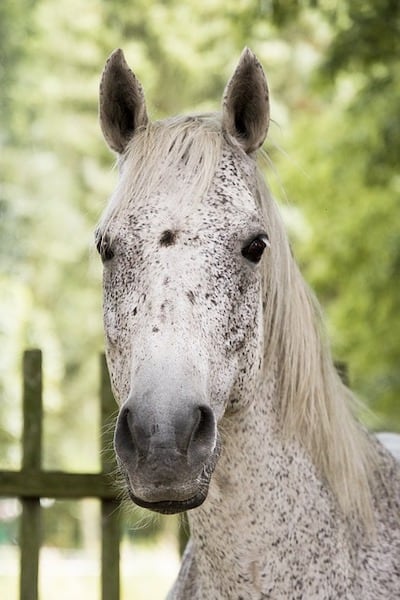
8) Friesian Horses
The breeding of Friesians has changed to make them sport horses for dressage rather than drafts designed to pull heavy loads. As such, they have become more reactive to respond to subtle aids quickly and have more energy in their gaits.
Friesians are also prone to health problems including laminitis (hoof infection) and skin infections. These conditions as well as the natural movement of the Friesian can be overwhelming to new riders.
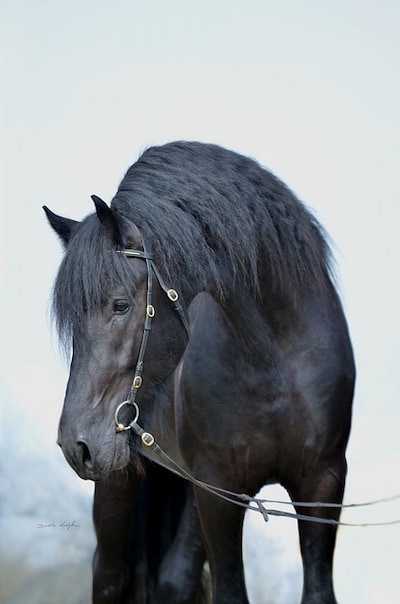
9) Australian Brumbies
Australian Brumbies are the most feral horses in Australia. They have several characteristics of wild horses. Because of this, they can be spooky and have unpredictable behavior patterns. This unpredictability makes them difficult to ride. You can read more about how to ride spooky horses here.
Beginners should not ride them because most will freeze when the horse behaves unexpectedly.
When a horse is reactive, the rider must work quickly and calmly to diffuse the situation and avoid injury to themselves and the horse.
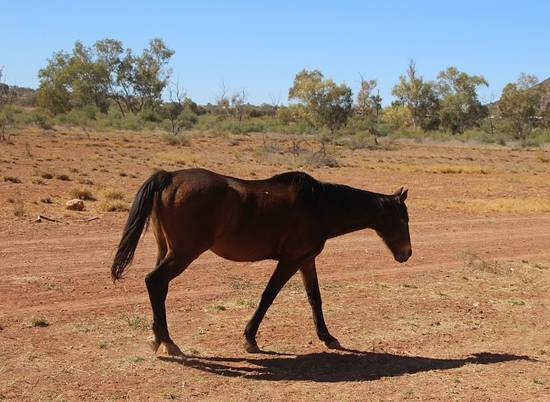
What Are the Characteristics of an Ideal Beginners Horse?
Now that you know which horses are a poor choice for beginners, let’s look at some of the traits a horse suited to their needs should have.
a) Middle to Senior Aged
Beginner riders should look for a horse that is at least 8 years old or older. This is because horses have had plenty of experience with humans and riding by this time. So, they will be more forgiving towards humans who are not too sure of what they are doing.
In contrast, younger horses are likely to be high-strung and less willing. As such, they will pose quite a challenge to someone who has never worked with horses.
b) Not Green or Green Broke
These terms indicate a horse with little to no training or a horse who has become used to a saddle but still has a long way to go in its learning. Beginner riders need a horse that is the opposite of this. One that is calm, knows their job, and is used to humans.
c) Has Lots of Experience in Different Environments
Both young and old horses have to be exposed to different places, sights, and sounds. This helps them get used to the busy and surprising world we live in and makes them more surefooted and safe rides. The more time a horse has spent away from the comfort of their barn, the safer they are for a new rider.
d) Minimal Health Issues
A healthy horse is a must for any rider, but especially important to beginners if they have never learned about horse care. Until they learn to handle horses with confidence, they will need a horse that is tolerant of them and the mistakes they make.
A horse with health issues will need more consistent care that a beginner may not know how to provide depending on their knowledge. Unless they have an experienced horse person to teach them, it is best to learn on a horse with a clean bill of health
These characteristics sum up the best traits for a beginner’s horse. Overall, they need a steady and calm horse that has plenty of experience with humans and their job. The horse must also be healthy with minimal health issues.
What Are the Most Important Riding Skills for Beginners to Learn?
Riding a horse properly is a skill that is learned. There is so much to learn and improve that even elite riders will have something to work towards. With that in mind, here are the most important skills beginners should learn to ride safely:
- How to maintain balance while riding and proper positioning
- How to guide the horse with the reins without pulling on their mouth
- When to take off and apply leg
- How to tell the horse to move forward, stop, and turn
- How to mount and dismount without hurting the horse
- How to do an emergency dismount
A calm horse who can tolerate mistakes and does not get frustrated easily is needed for beginners to learn these skills. That is why is it recommended they avoid the breeds mentioned earlier
Final Thoughts
The worst horse breeds for beginners are Arabians, Thoroughbreds, Mustangs, Akhal Tekes, Shires, Percherons, Trakehners, Friesians, and Australian Brumbies. The reasoning for this is that these horses either have a lot of spirit, are too tall, or have wild horse tendencies, among other things.

